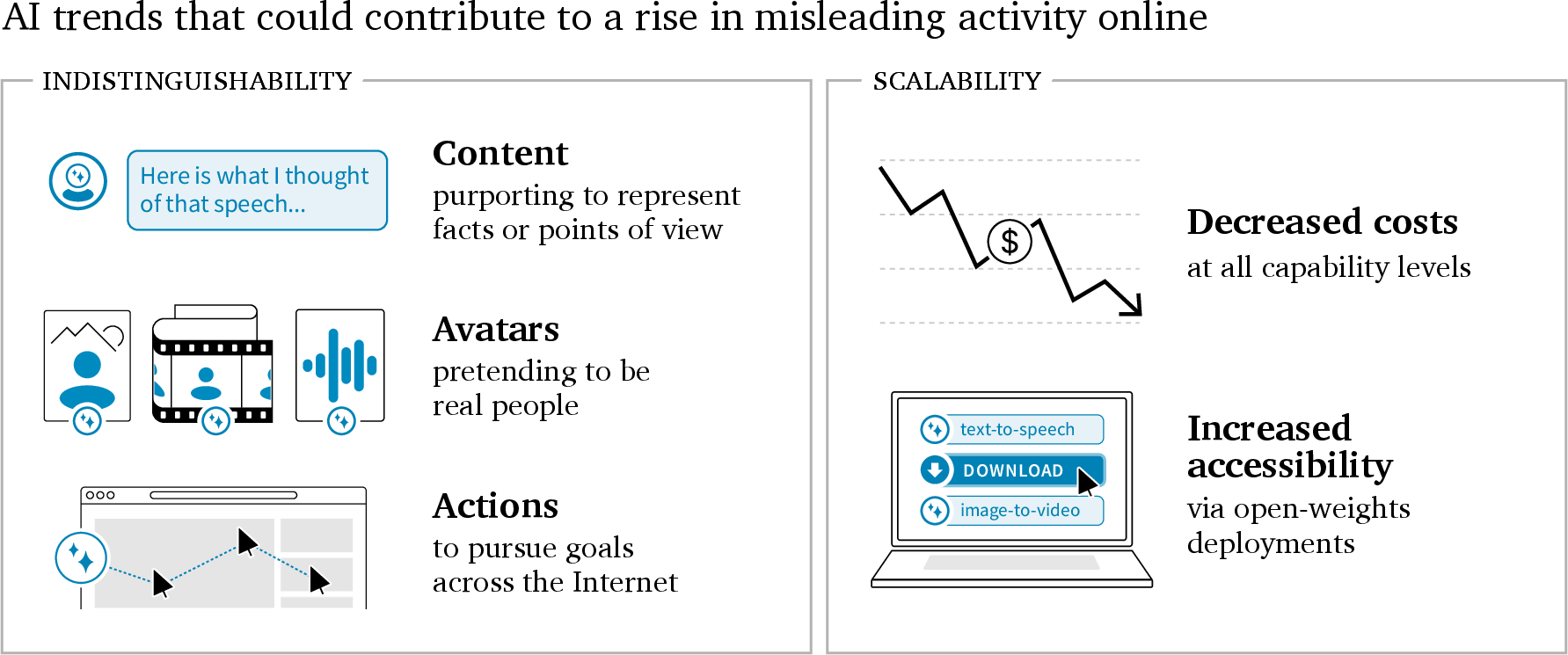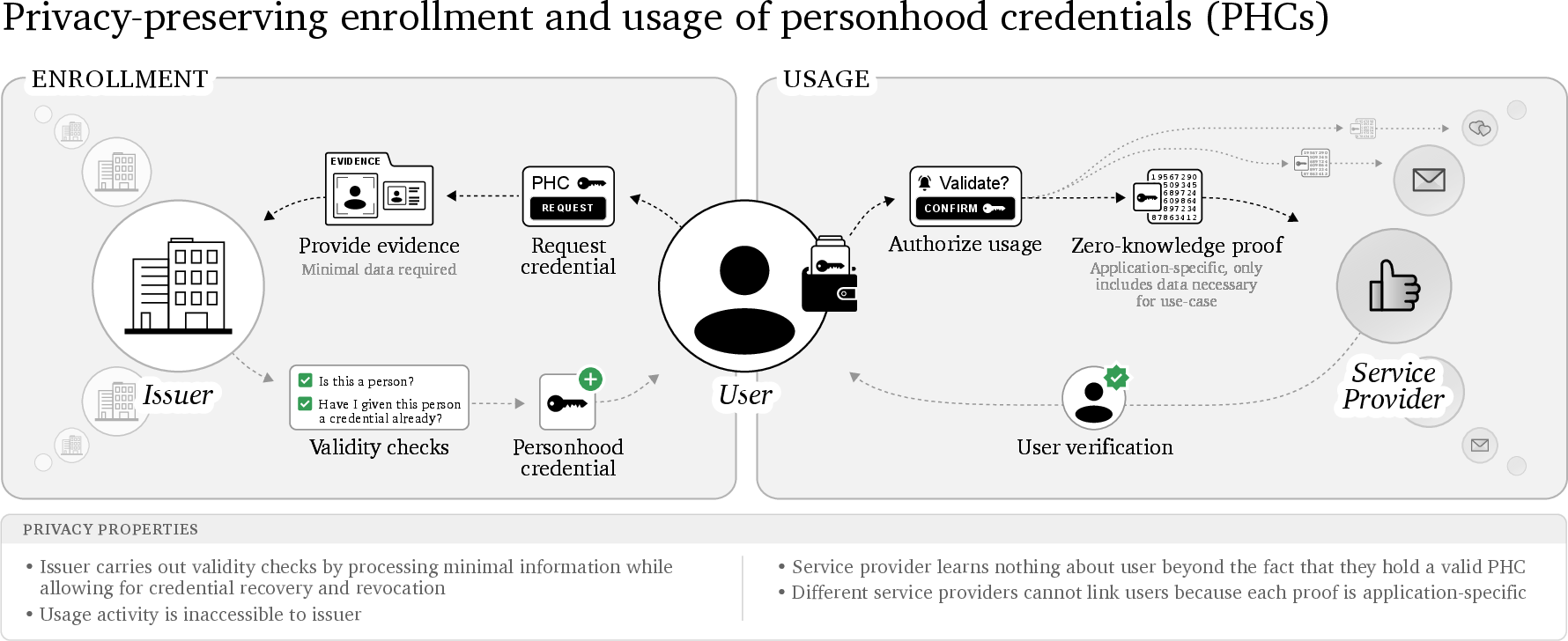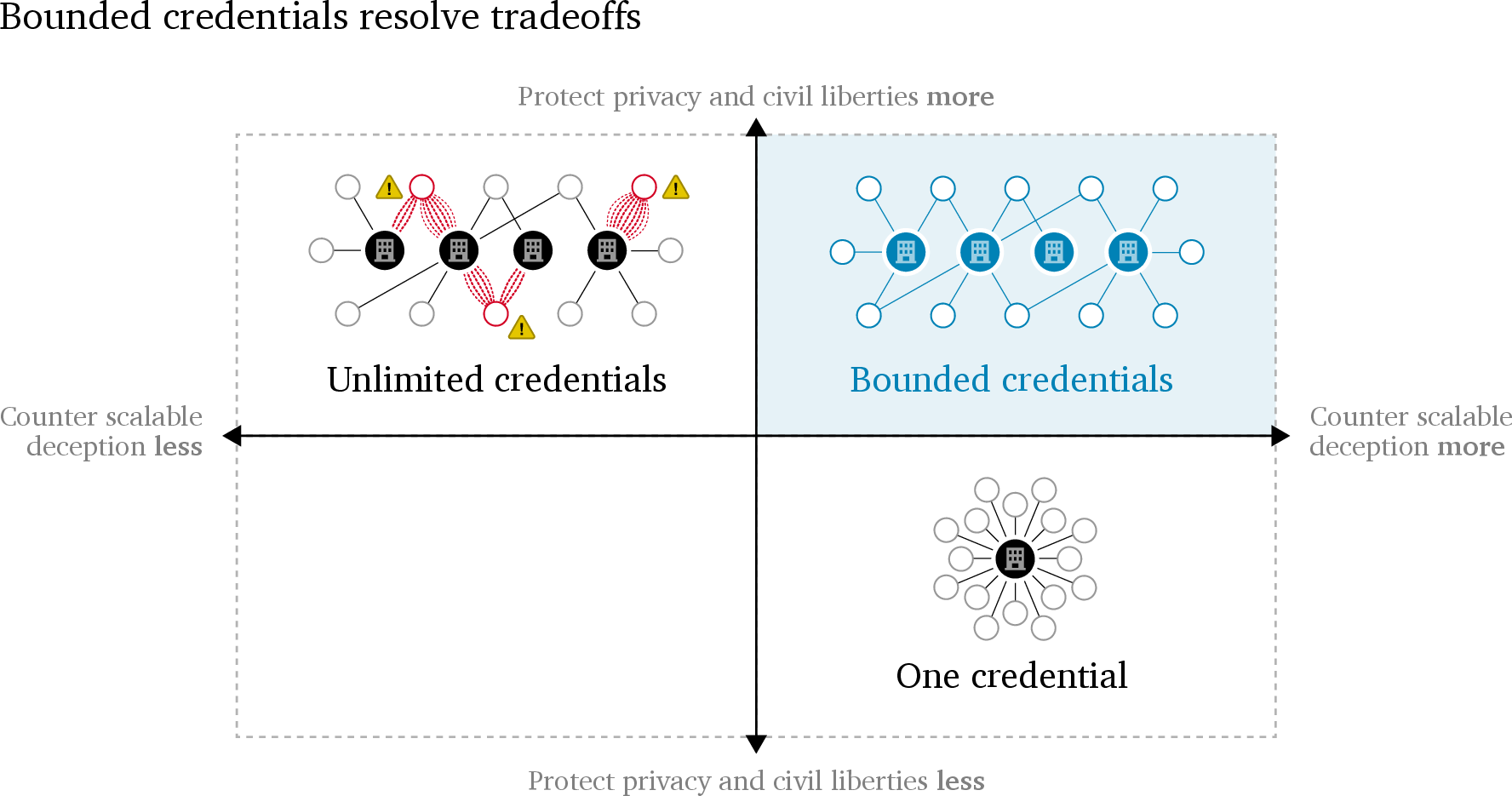- The paper introduces personhood credentials as a novel method to verify human identity online using privacy-preserving and cryptographic techniques.
- It presents a scalable system that enforces one credential per user and employs unlinkable pseudonymity to mitigate AI-driven deception.
- The study discusses challenges in balancing privacy, security, and inclusivity while integrating PHCs into existing digital identity frameworks.
Personhood Credentials: Ensuring Authenticity in the Age of AI
The paper "Personhood credentials: Artificial intelligence and the value of privacy-preserving tools to distinguish who is real online" (2408.07892) presents an innovative approach to addressing the growing challenge of AI-driven deception online. The concept of personhood credentials (PHCs) is introduced as a means to allow users to prove their human identity to digital services without revealing personal data, thus enhancing trustworthiness while maintaining privacy.
Key Concepts and Motivations
The Threat of AI-Powered Deception
With the advancement of AI technologies, distinguishing between human users and AI-driven actors online is becoming increasingly difficult. AI can generate human-like content, create realistic avatars, and perform actions that complicate the identification of malicious actors. This indistinguishability and the scalable nature of AI-powered schemes amplify the potential for abuse, misinformation, and fraudulent activities across digital platforms.

Figure 1: Personhood credentials rely on two deficits of AI.
The Role of Personhood Credentials
Traditional methods, such as CAPTCHAs or stricter identity verification, fall short in countering sophisticated AI systems and often compromise user privacy. In contrast, PHCs provide a scalable solution by confirming human identity through anonymous digital proofs. These credentials can be distributed by trusted entities like governments and non-governmental organizations, ensuring that each person receives only one credential per issuer.

Figure 2: Indistinguishability and scalability could drive an increase in AI-powered deception.
Technical Implementation
Designing a PHC System
- Credential Limits: Each individual should be able to acquire only one credential per issuer. This ensures that one person cannot create multiple identities to engage in deceitful practices, such as sockpuppetry or bot attacks. Enforcing a limit requires robust mechanisms, potentially leveraging state-of-the-art cryptographic systems and in-person verification methods.
- Unlinkable Pseudonymity: PHC systems must prioritize privacy. Usage of a PHC should disclose as little as possible about the holder's identity, maintaining unlinkable pseudonymity across services. Zero-knowledge proofs and unique session identifiers can be employed to achieve this, allowing service providers to verify credentials without accessing personal information.

Figure 3: Illustration of enrollment and usage of a personhood credential.
Ensuring Integrity and Trust
The design of a PHC system involves several trade-offs, particularly between privacy, accessibility, and security. The risk of credential theft or fraudulent issuance must be mitigated through regular re-authentication and secure storage practices. Both physical and digital security measures are crucial for maintaining trust in the system. Additionally, having multiple independent issuers can reduce the risk of centralized control and enhance user choice.
Challenges and Considerations
Addressing Implementation Barriers
Deploying PHCs on a large scale presents significant challenges, including ensuring equitable access to this technology and protecting user rights. There is a risk of disenfranchisement if certain groups lack the resources or technical means to obtain credentials. Designing PHC systems with inclusivity in mind is essential.
Moreover, careful thought must be given to the governance model to check the issuers' power and ensure they operate transparently and ethically. Potential stakeholders must include governments, technological firms, and civil society to balance interests and maintain a fair system.

Figure 4: Ecosystem design trade-offs---the argument for bounded credentials.
Benefits of Personhood Credentials
PHCs can significantly curtail AI-driven deception by providing authentic proof of personhood, reducing the impact of sockpuppets, bot attacks, and untrustworthy AI agents. This fosters a more secure and trustworthy digital environment, enhancing interactions across online services and platforms. Moreover, PHCs offer a scalable and adaptable framework that can evolve alongside AI advancements, providing a robust defense against emerging threats.

Figure 5: Summary of three key benefits of PHC systems.
Conclusion
The implementation of personhood credentials represents a significant step forward in the ongoing effort to secure digital interactions in the face of rapid AI advancements. Despite the challenges associated with deployment, the potential benefits of PHCs—in maintaining privacy, enhancing trust, and supporting scalable defenses against AI-driven deception—make them a compelling proposition for the future of digital identity management. The paper calls for collaboration between policymakers, technologists, and the broader public to refine and realize this promising technology.




